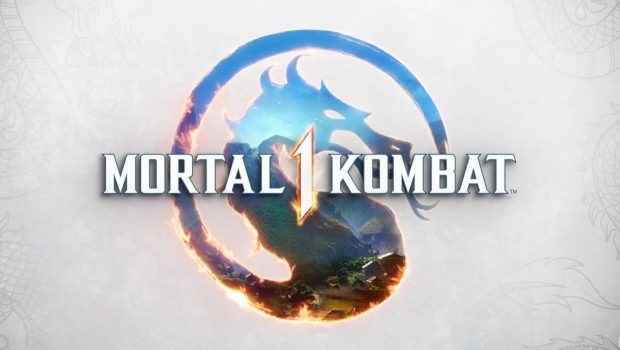Mortal Kombat 1 PS5 Review – Flawed Victory
Summary: Unmatched cinematic story mode and core fighting gameplay mechanics marred by baffling content and feature exclusions.
3.5
Flawed Victory
31 years, two reboots, and two timeline resets later, Mortal Kombat 1 re-imagines its kolourful cast of iconic kharacters and their long-standing konflicts for a new era of ultra-violent and ever-entertaining bloodshed that only a fighting game can get away with.
But with such a storied franchise history comes heavy expectations. Some want their favourite ninjas and femme fatales to make the latest roster, competitive players want their in-depth combo mix-ups and frame-data, and casual gamers also want to be able to pick up and play.
Netherrealm Studios has exceeded such expectations before, so do they continue to deliver? In some ways, like the cinematic story-mode, yes. In other areas, I can’t help but feel MK1 is a step back.
Following 12 mainline games, three spin-offs, two mobile games and a ton of expanded universe media (film, TV shows, comics), MK1 takes the opportunity to reset plot points while still acting as a direct sequel narratively. After the events of Mortal Kombat 11 and its DLC expansion Aftermath, series hero Liu Kang uses his newfound god-hood and time-shifting powers to recreate the universe, undo the bloodshed and loss the warring Earthrealm and Outworld endured, and provide everyone a chance to re-shape their destinies. The game kicks off at the beginning of the latest Mortal Kombat tournament, which still acts as a formal competition to keep Earthrealm and Outworld from warring with each other. Liu Kang, as Earthrealm’s protector, recruits a number of familiar faces (but changed in certain ways) to compete on behalf of Earthrealm; humble farmers Raiden and Kung Lao, Hollywood washout Johnny Cage, and repentant Yakuza gangster Kenshi Takahashi, using the Lin Kuei ninjas Scorpion, Smoke and Sub-Zero to aid in his recruitment. The team travel to a united Outworld to meet with its new leaders, Sindel and her daughters Mileena and Kitana, but as the tournament unfolds, a recurring series threat emerges to undo all of Liu Kang’s work, forcing Earthrealm into action.
For many fighting game fans, Mortal Kombat 1’s main draw is its 7-hour single-player story mode, and I found it to be as ambitious, over-the-top, and unapologetically violent as ever, in a way both long-time fans and curious newcomers will enjoy. It continues plot threads from the previous games, while still exploring new facets of its legendary cast to introduce exciting new plot threads and character interactions. Seeing Raiden take the place of Liu Kang as the humble and level-headed mortal hero, Sub-Zero and Scorpion as brothers, and Reptile and Baraka as sympathetic and heroic fighters instead of generic monsters is a lot of fun, and there’s plenty of other surprising twists and fan-service on offer (particularly for fans of the 3D era).
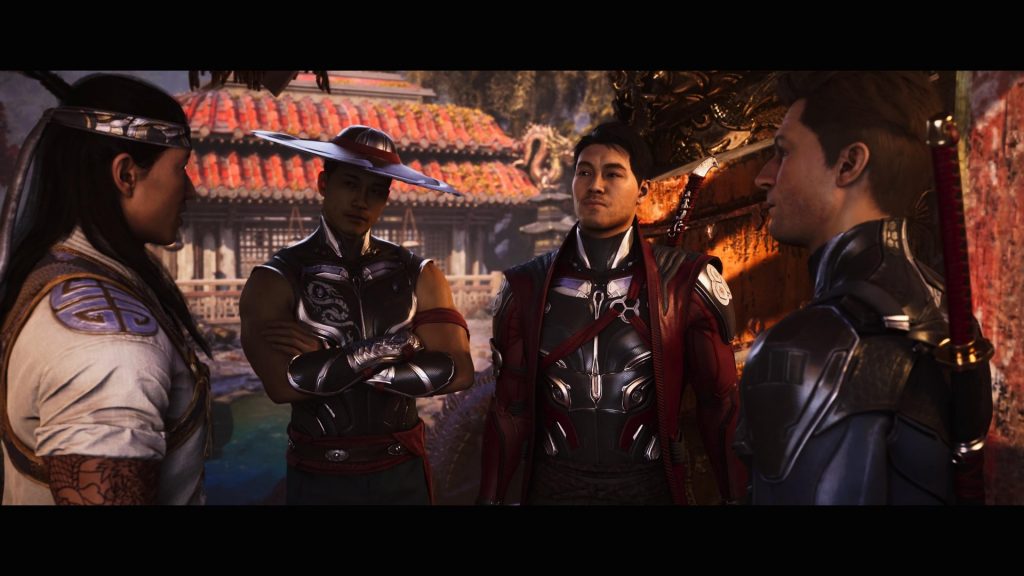
Is it cheesy? Hell-yes, but in a way that is oddly endearing and entertaining for a kung-fu high-fantasy story that involves copious amounts of blood and guts and nonsensical conflicts. MK embraces its ridiculousness whole-heartedly, and it doesn’t hurt that the high-quality cinematics, animations, visuals and voice-acting continue to be a step above other contemporary fighting games phoning it in (looking at you, Tekken), so if you are in it for the story mode, you won’t be disappointed (there’s also the standard Arcade mode Towers which offer individual character endings that expand upon each fighter’s role in the story further).
The sheer spectacle of the cinematic story mode would only go so far if the actual fighting did not hold up, but thankfully, Mortal Kombat 1’s 2.5D gameplay is as fun, fluid and in-depth as expected. Every one of the 23 characters available on launch look amazing and feel intuitive to pick-up and play, with extensive move lists and combo strings that encourage experimentation to find the right mix-up for the right time. MK1 returns to faster and more aggressive combos and mix-ups compared to the previous game’s slower and zoner-heavy pacing, which may or may not take you some time to adjust. Long overdue returning fighters like Li Mei and Nitara are blindngly agile and flashy, series mainstays Liu Kang, Sub-Zero and Scorpion as close to the “easy to learn and difficult to master” mantra as possible, while the likes of Ashrah, Kenshi and Reiko offer an added layer of complexity owing to their unique fighting styles. Aerials, Fatal Blows, Grapples, Fatalities and Brutalities add further depth to each match, and pulling off a gnarly finisher to humiliate your opponent with Mortal Kombat’s highly stylized violence never gets old (except when it happens to you, of course).
The biggest new addition to the core gameplay formula is the introduction of assists or Kameos, iconic franchise characters who are not part of the main playable roster but whom can be summoned during combat at the press of a button to perform a number of moves that can help you extend combos, get out of a beating or even just get a breather. Kameos are a great replacement for the previous Variations system, which divided a character’s special moves and forced players to choose which ones they couldn’t live without. I found many Kameos to compliment my overly aggressive General Shao and defensive zoning Reptile playstyles in creative ways, but there are a few (I’m looking at you, Sareena and Frost) which are due for a nerf. Plus, it’s a creative way to bring back more of the franchises’ 70+ characters without taking up space on the playable roster, with more to come in post-launch character passes.
With the main cinematic story mode and core gameplay so strongly executed, I was caught off-guard by several areas of MK1 that are severely lacking in polish, content or otherwise a step back compared to MK11. For instance, character customization is far more simplified than its predecessor, with less unique gear, skins and colour palettes to unlock and to personalize your own version of your favourite fighters (the game also does not list how each customization option is unlocked anymore). Introductions and victory animations are also gone, and you also can’t choose your designed look in the fighter select screen, which is a bone-headed decision that is almost as bad as the nonsensical omission of pinning moves onto the screen in Practice mode. Krushing Blows and stage interactivity are gone, lessening variety in the average fight. A ‘Tweakvar Download’ technical message also pop-ups regularly in between menus. While seemingly small in the grand scheme of things, added together, these elements make the MK1 experience feel far less polished and content-rich than it should be.
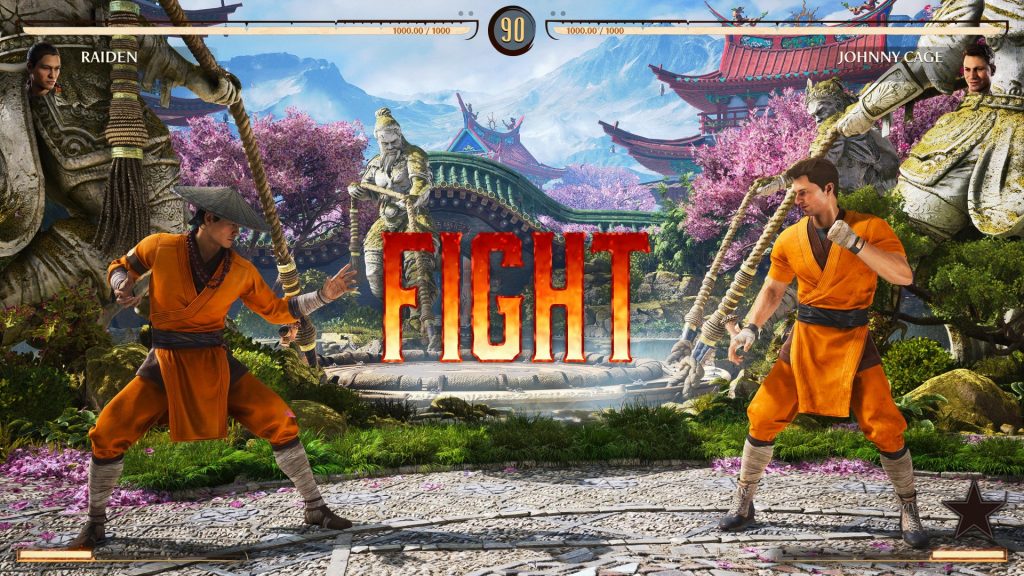
Perhaps the most egregious change is made to the character clashes, the infamous pre-fight banter scenes first introduced in MKX and further refined in MK11. These clashes offer hours of entertainment in discovering the many unique interactions between each fighter and the nuggets of narrative lore that didn’t quite fit in the main story or Tower endings. In MK1, clashes are now reduced to two lines of dialogue and instead of being presented at the start of a fight, complete with unique character intro animations, they now play out in the fighter select screen. What’s worse is these clashes can only be experienced when playing Versus mode or Kasual Online, not in single-player Towers or Invasions modes where it would logically make most sense. It may be negligible to some, but with so much cool lore and fighters present in MK1, it sucks as a fan to see less of these interactions in day-to-day play, especially after being spoiled by MK11’s take.
Online, too, feels off. Divided into three modes, you can play Ranked matches against opponents of similar skill and gain rank progression, unique cosmetic rewards and bragging rights in Kombat League, Kasual unranked matches with an option for King of the Hill (each of you take turns to defeat the leader) and Private mode for matches against you and your friends to play 1vs1 or King of the Hill. I experienced a lot of lag navigating these menus or waiting for matches to start which I did not have previously in MKX or MK11, and it’s hard to not notice the removal of public Rooms, which previously offered a way to match up with the online kommunity and connect with other players in your region – frankly, it’s a baffling omission, one of several seemingly done to move things back to basics. It’s just too far back a step, in my opinion.
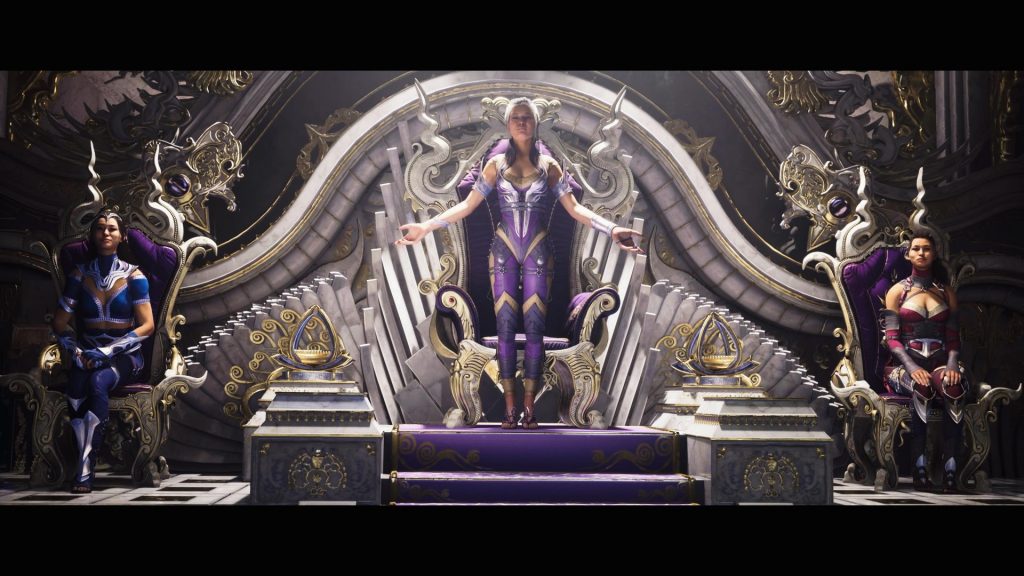
So, what about the new mode, Invasions? For me, this games-as-service mode which has replaced Krypt is more of a miss than a hit, especially after being touted in pre-release marketing as delivering more in-depth single-player content than previous games. Invasions puts you on a series of board-game style maps which you must navigate to progress through fights, complete side challenges such as Test-Your Might and survival and ambush levels, and purchase items off vendors to survive increasingly challenging encounters with unique modifiers (such as armor or low gravity or multi-fighter scraps). It’s also yet another RPG-lite experience, with experience points and stats to level up after each win, gold to spend and items called Talismans to equip for special moves and benefits. It all sounds interesting on paper, but in reality I found Invasions to be severely lacking in creativity or interesting fights, even with the preceding cutscenes that hint at an ongoing story that takes advantage of the numerous timeline shenanigans of the MK lore. Granted, Invasions is built on a six-week seasonal schedule, so it may improve post-launch, but so far, I feel it’s inferior to MK11’s endlessly shifting Towers of Time.
Mortal Kombat 1 is the first game in the series to be developed in Unreal Engine 4, and the shift has resulted in a visually phenomenal and technically impressive game across-the-board. Character animations, models and textures are meticulously detailed, as are the diverse stages and environments of Earthrealm and Outworld the story takes places in, all rendered in 4K resolution and 60 frames-per-second on PS5 (though things cut back to 30fps during cutscenes, fatal blows and fatalities, sadly). It’s also a brighter and more colourful game than MK11 at times, with a heavily stylized aesthetic that leans more into the franchise’s well-established East-Asian theme and martial arts tournament backdrop further enhanced with impressive lighting and HDR. And, if you’re wondering, yes, the fatalities and violence in general is as high-fidelity, extravagant and ridiculous in presentation than ever before (Liu Kang’s new finishers are a perfect example).
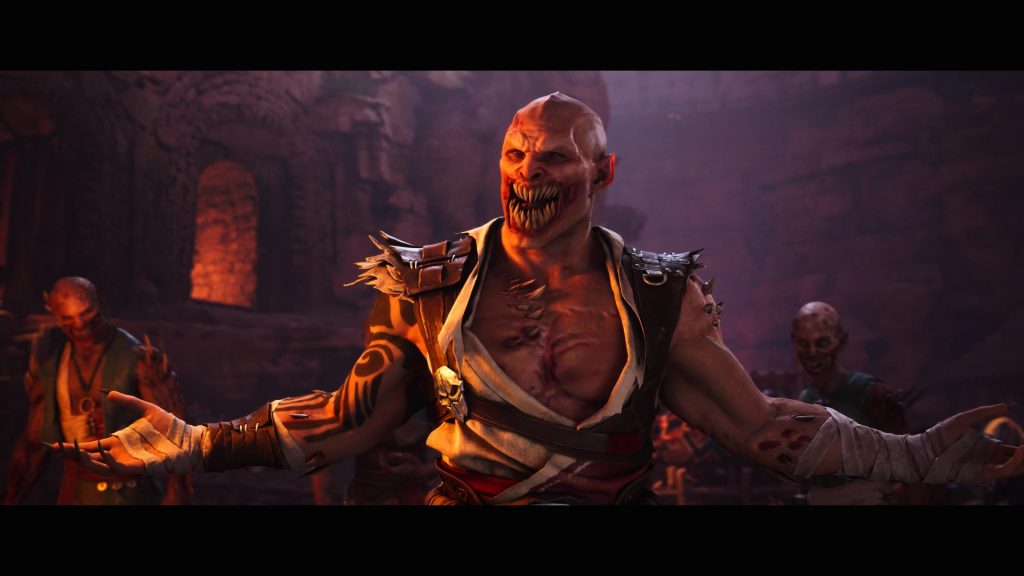
The Final Verdict
With an entertaining and highly cinematic story-mode, colourful re-imagined character designs and fast and visceral combat mechanics, Mortal Kombat 1 is a game for long-time fans first and foremost, while also offering a stellar casual fighting game experience for curious newcomers.
This latest entry unfortunately takes a few too many steps back in its omissions of certain content, quality-of-life features and modes and lack of polish compared to its two immediate predecessors, which may be a deal-breaker for veterans, but overall I enjoyed my time with MK1 and the live-service nature of its Invasions mode and character roster options means there’s still more to come.
Game Details
Primary Format – Games – Microsoft Windows, Nintendo Switch, PlayStation 5, Xbox Series X | S
Game Genre – Fighting game
Rating – R18+
Game Developer – NetherRealm Studios
Game Publisher – Warner Bros



